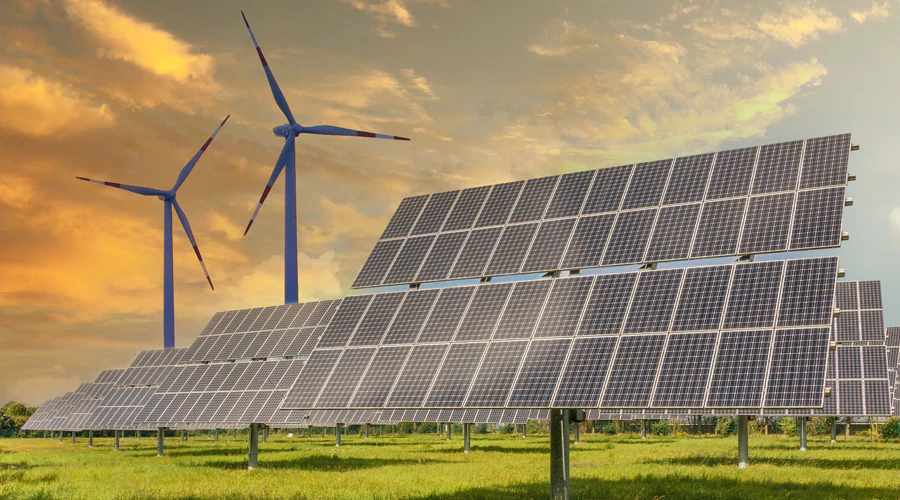Renewable Energy Source
Renewable Energy The most common definition is that renewable energy is from an energy resource that is replaced rapidly by a natural process such as power generated from the sun or from the wind.
Every hour the sun beams onto Earth more than enough energy to satisfy global energy needs for an entire year. Solar energy is the technology used to harness the sun’s energy and make it useable. Today, the technology produces less than one tenth of one percent of global energy demand.
Many people are familiar with so-called photovoltaic cells, or solar panels, found on things like spacecraft, rooftops, and handheld calculators. The cells are made of semiconductor materials like those found in computer chips. When sunlight hits the cells, it knocks electrons loose from their atoms. As the electrons flow through the cell, they generate electricity.
On a much larger scale, solar thermal power plants employ various techniques to concentrate the sun’s energy as a heat source. The heat is then used to boil water to drive a steam turbine that generates electricity in much the same fashion as coal and nuclear power plants, supplying electricity for thousands of people.
Renewable energy is energy that comes from resources which are continually replenished such as sunlight, wind, rain, tides, waves and geothermal heat. About 16% of global final energy consumption comes from renewable resources, with 10% of all energy from traditional biomass, mainly used for heating, and 3.4% from hydroelectricity. New renewables (small hydro, modern biomass, wind, solar, geothermal, and biofuels) accounted for another 3% and are growing very rapidly.The share of renewables in electricity generation is around 19%, with 16% of electricity coming from hydroelectricity and 3% from new renewables.
Renewable energy projects are large-scale, renewable technologies are also suited to rural and remote areas, where energy is often crucial in human development. As of 2011, small solar PV systems provide electricity to a few million households, and micro-hydro configured into mini-grids serves many more. Over 44 million households use biogas made in household-scale digesters for lighting and/or cooking, and more than 166 million households rely on a new generation of more-efficient biomass cookstoves.
Renewable energy flows involve natural phenomena such as sunlight, wind, tides, plant growth, and geothermal heat, as the International Energy Agency explains:
Renewable energy is derived from natural processes that are replenished constantly. In its various forms, it derives directly from the sun, or from heat generated deep within the earth. Included in the definition is electricity and heat generated from solar, wind, ocean, hydropower, biomass, geothermal resources, and biofuels and hydrogen derived from renewable resources.
Solar technologies are passive. For example, big windows placed on the sunny side of a building allow sunlight to heat-absorbent materials on the floor and walls. These surfaces then release the heat at night to keep the building warm. Similarly, absorbent plates on a roof can heat liquid in tubes that supply a house with hot water.
Solar energy is lauded as an inexhaustible fuel source that is pollution and often noise free. The technology is also versatile. For example, solar cells generate energy for far-out places like satellites in Earth orbit and cabins deep in the Rocky Mountains as easily as they can power downtown buildings and futuristic cars.




